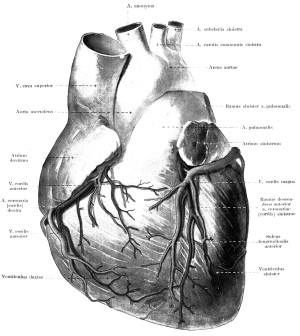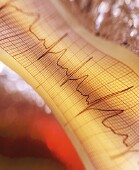- Navigating Your Midlife Crisis: Embracing New Possibilities
- City Raccoons Showing Signs of Domestication
- Mapping the Exposome: Science Broadens Focus to Environmental Disease Triggers
- One Week Less on Social Media Linked to Better Mental Health
- Your Brain Changes in Stages as You Age, Study Finds
- Some Suicide Victims Show No Typical Warning Signs, Study Finds
- ByHeart Formula Faces Lawsuits After Babies Sickened With Botulism
- Switch to Vegan Diet Could Cut Your Greenhouse Gas Emissions in Half
- Regular Bedtime Does Wonders for Blood Pressure
- Dining Alone Could Mean Worse Nutrition for Seniors
Wireless Pacemaker Shows Promise in Early Trial


MONDAY, Aug. 31, 2015 (HealthDay News) –A tiny, wireless heart pacemaker showed promise in early tests and could offer an alternative to conventional, wired pacemakers, researchers report.
Experts say, however, there are still some safety concerns with the new device.
The wireless pacemaker is attached to the heart using a catheter inserted through a leg. Traditional pacemakers use a generator and wires, and they require surgery to be implanted.
The study included 526 patients, average age nearly 76, in the United States, Canada and Australia. During the first six months of use, the wireless pacemaker showed “good safety and reliable function,” according to lead investigator Dr. Vivek Reddy, of the Icahn School of Medicine at Mount Sinai Hospital in New York City, and colleagues.
The study, presented Sunday at the European Society of Cardiology annual meeting in London and published simultaneously in the New England Journal of Medicine, was funded by device maker St. Jude Medical Inc., and Reddy has received consulting fees from the company.
After six months, nearly 7 percent of patients in the study had complications connected to the device. About 10 percent of patients with conventional pacemakers have complications, according to the Associated Press.
However, a clinical trial of the wireless pacemaker in Europe was stopped two times last year and again earlier this year after a number of complications occurred. In one case, the pacemaker came loose and lodged in the artery leading to the patient’s lungs, the AP reported.
The wireless pacemaker is approved in Europe, and the results of this new study will likely be submitted to the U.S. Food and Drug Administration. Medtronic makes a similar pacemaker that is also available in Europe, the news service reported.
The new device costs at least twice as much as a conventional pacemaker and lacks some functions that are standard on conventional devices, according to the AP reported.
“It can’t monitor patients remotely, so they have to go to the hospital for checks,” Dr. Jagmeet Singh, a spokesman for the American College of Cardiology, explained to the AP.
More information
The U.S. National Heart, Lung, and Blood Institute has more about pacemakers.
Source: HealthDay
Copyright © 2025 HealthDay. All rights reserved.










